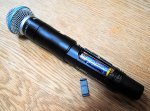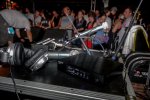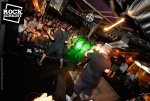+1, exactly right. Yes, staying in the digital world would have its advantages, but the complexity of the configuration makes that less desirable. An analog output can be patched into just about any source with full compatibility. The quality difference between digital and and analog in that scenario would be nearly impossible to distinguish. The problem with digital signals is that they all need to be in sync, or they have to be cached to sync up with the device they are inputting into. The latency of caching to sync up the signals is just as much as converting the signal from d/a-a/d. Since the technology of digital to analog and analog to digital is SO refined, there's no advantage to staying digital for most operations. Combine that with very few mixers that have AES inputs and you'll then know why they decided to not add that feature.
If you want to stay in the all digital realm, then you move to gear using Dante. Of course, that's in a higher price bracket but you get to stay digital throughout that way.




